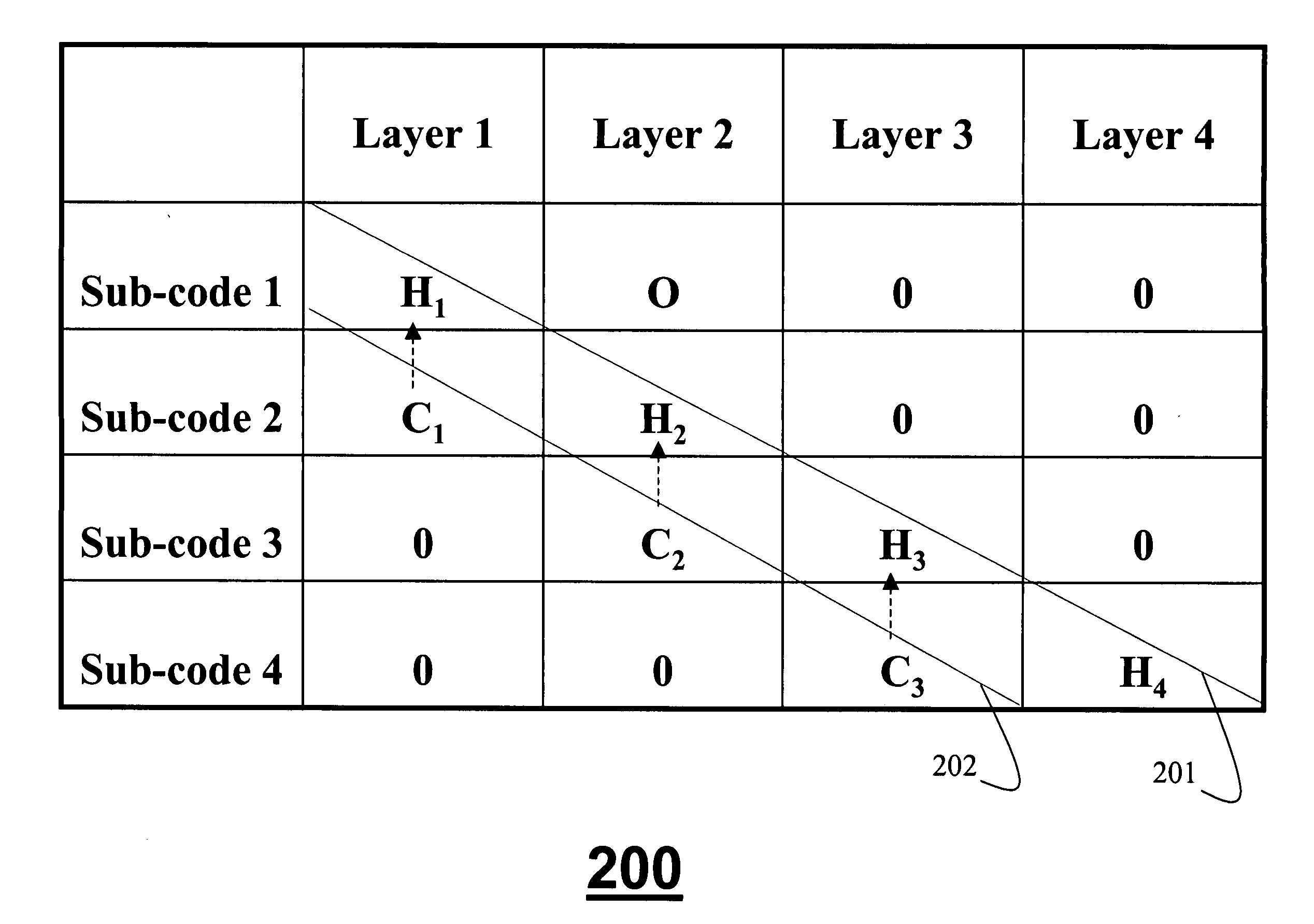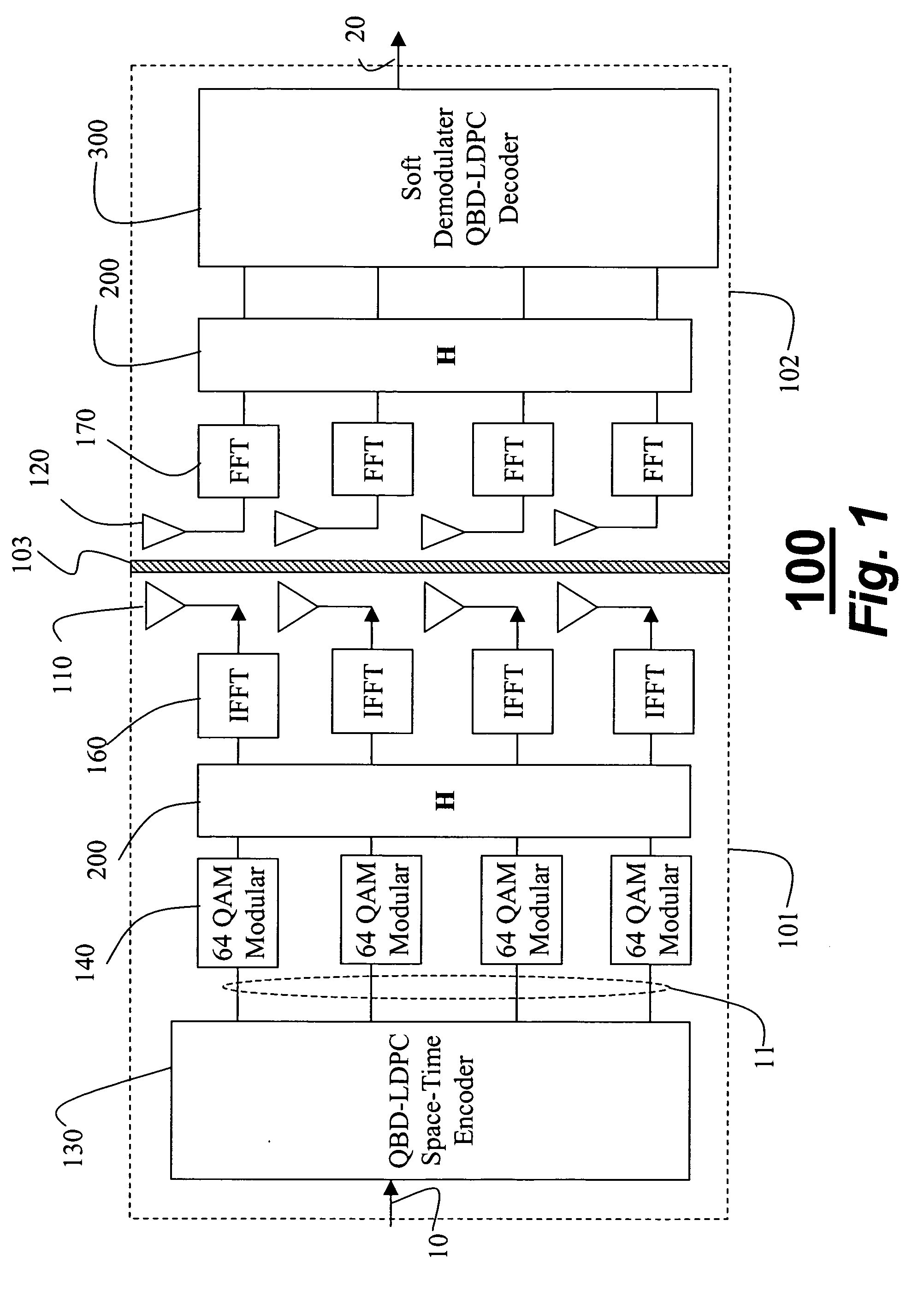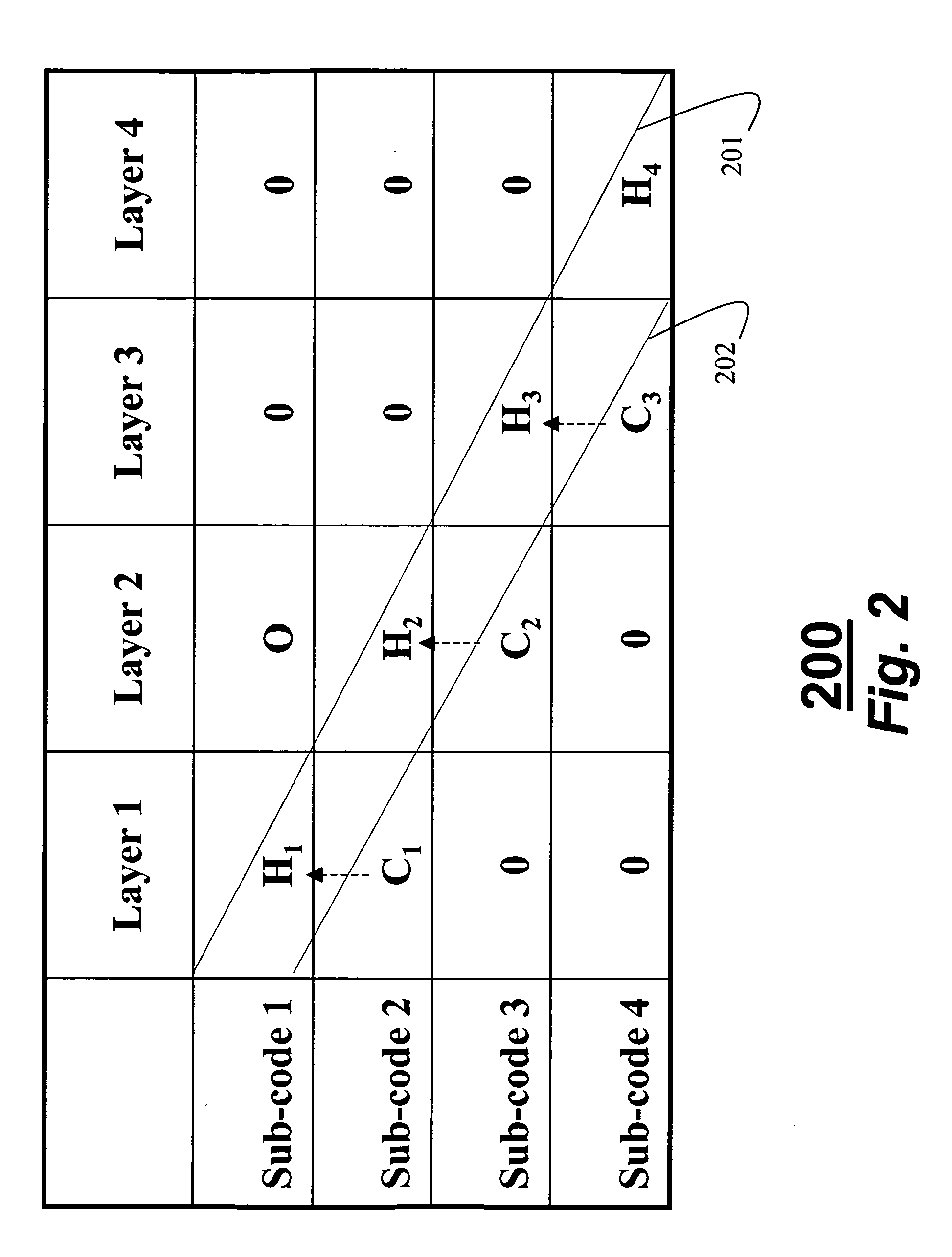Quasi-block diagonal low-density parity-check code for MIMO systems
a parity-checking code and diagonal technology, applied in the field of multi-input, multi-output communication systems, can solve the problems of increasing interference, less likely decoding of subsequent layers, and presence of error propagation, so as to improve the detection performance of current layers and reduce error propagation
- Summary
- Abstract
- Description
- Claims
- Application Information
AI Technical Summary
Benefits of technology
Problems solved by technology
Method used
Image
Examples
Embodiment Construction
[0018] System Structure
[0019] Transmitter
[0020]FIG. 1 shows a multi-input, multi-output (MIMO) system 100 that uses a parity check matrix structure 200 of a binary, quasi-block diagonal, low-density, parity-check code (QBD-LDPC). The system 100 includes a transmitter 101 and a receiver 102. The transmitter 101 includes four (Nt) transmit antennas 110, and the receiver has four (Nr) receive antennas 120.
[0021] The transmitter includes an encoder 130. The encoder produces codewords b in multiple layers 11 from an input bit stream 10. Each layer is passed to a corresponding modulator 140. There is one modulator 140 for each encoded layer. In this example, the modulation is according to 64 QAM.
[0022] A quasi-block diagonal, low-density parity-check code, in the form of a matrix H 200 is applied to each layer. The structure of the matrix H 200 is described in detail below with reference to FIG. 2.
[0023] After the matrix H 200 is applied, each layer can be passed through an inverse f...
PUM
 Login to View More
Login to View More Abstract
Description
Claims
Application Information
 Login to View More
Login to View More - R&D
- Intellectual Property
- Life Sciences
- Materials
- Tech Scout
- Unparalleled Data Quality
- Higher Quality Content
- 60% Fewer Hallucinations
Browse by: Latest US Patents, China's latest patents, Technical Efficacy Thesaurus, Application Domain, Technology Topic, Popular Technical Reports.
© 2025 PatSnap. All rights reserved.Legal|Privacy policy|Modern Slavery Act Transparency Statement|Sitemap|About US| Contact US: help@patsnap.com



